Some Prominent British Generals and their Fortunes in the Great War
- Home
- World War I Articles
- Some Prominent British Generals and their Fortunes in the Great War

[This article first appeared on The Western Front Association's old website and was published in September 2009].
Introduction
At first sight, the neophyte amateur war historian may find the nomenclature of the war of 1914-1918 rather confusing. For many years, it was called the Great War and then, from 1939 on, when the Second World War broke out, it became known as the First World War (also written as WW1). However, many war historians, this author included, have tended to retain the original term – The Great War.
Similarly, the proto-war historian will soon be challenged by various views about the reputations of the British senior generals (and field marshals); particularly so those who served on the Western Front. On the one hand, there are the records of the adulation and rewards that rained down on them when the war was won, and on the other, the literary and verbal brick-bats that soon followed and were liberally cast at them; along with slanders and libels such as ‘British soldiers were lions led by donkeys’, ‘Butchers of the Somme’ and the like.
However, in recent years – the Great War ended over 90 years ago – several eminent war historians have once again come to the aid of the reputations of these generals. These modern historians claim that many of the adverse assessments did not take in the reality of the situation, and the standards and mores that existed at the time. Also they blame certain politicians at the time for ‘clouding the water’ in a self-serving way. Certainly, the impartial observer reading the post-war memoir and writings of Mr. David Lloyd George, war-time holder of the posts of Chancellor of the Exchequer, Minister of Munitions, Secretary of State for War and Prime Minister, would find them to be at a distinct self-serving variance to what the reader will have learned from other authoritative sources.
Seeing it coming
Apparently, with the possible exception of Field Marshal Lord Herbert Horatio Kitchener, Secretary of State for War in 1914, none of principal British generals clearly foresaw the scale and industrial intensity of the war that descended on Europe. Or the technological changes that would transform the nature of the battlefield, the role of the soldiers who fought there, and the minds of the men who commanded them.
If, indeed, some British generals did see a European War in the offing, they refused to accept it for what it was, and expected the future to look after itself, with the help of the Royal Navy, or be looked after by someone else entirely without dragging the British Empire into the messy cockpit of Europe.
Consequently, when the European War (it only became the Great War in due course) in all its reality was unexpectedly thrust upon the British Empire on August 4th, 1914, there was a mad scramble to get a British Expeditionary Force (BEF) into Europe that would go to the aid of Britain’s Allies, Belgium and France against the ruthless onslaught of Germany and its cohorts.
On the positive side, the majority of the British Army’s senior officers – although relatively few in number - had been constantly embroiled in the many colonial wars of the Empire, and had long experience on these battlefields, e.g. Southern, Western and Eastern Africa, Sudan, Egypt, China and the North West Frontier of India. Of course, as we shall see, even some of the most senior serving officers failed to perform to the required high standard. Indeed, in a recent British television programme the grandson (Dan Snow) of a former British Western Front general, Thomas D’Oyly (Slush) Snow, GOC VII Corps, stated that his grandfather had admitted to his family after his early retirement in 1918 that he had left the army because he had been increasingly overwhelmed by it all and had “just had not known what to do.” Apropos of which, the future-to-be Field Marshall Bernard Law Montgomery was recorded as saying ‘Snow was of course quite useless; he was an old man (60) and ought to have been sent home long before.’ And, reportedly, Allenby (idem.) also considered sending Snow home for a lack-lustre performance as early as during the First Battle of the Somme in July 1916.
Additionally, in the early days of the war, many former senior serving officers were hurriedly brought back into the armed forces to serve Queen and country once again – the so-called ‘dug-outs’. But some were found wanting due to age, unwillingness or a lack of competence/fitness. Most of these were sent back into retirement before the first year of the war was over, being rather a case of injudicious selection than one of a personal dereliction of duty.
The Good, the Bad and the Unprepared
From the outset, it is obvious that not all of the British generals could have been entirely good, completely bad, or unprepared for high command when it came. And, moreover, they were not responsible as a group for all the many misfortunes that befell the BEF. Equally, it is not just that the blame for the disasters on the Western Front – again there were many – should fall squarely on the shoulders of either of the senior-most commanding officers of the BEF’s i.e. French (idem.) and Haig (idem.) They both were, after all, to some degree restricted by the qualities of the men they were given to command, the matériel provided to them to wage the war, and the considerable ability of the enemy to ruthlessly exploit the individual and the collective vulnerabilities of both men and matériel.
What seems to be a more reasonable approach for the unbiased observer is that there were indeed some generals who were both good and professional soldiers – at least most of the time – some who were largely proficient if generally uninspired, and others who were found lacking to an increasing degree to the point where they created more harm than good, and should be labelled as such. Luck and circumstance also played an important and capricious role in military success and failure, and should also be taken into consideration.
Recent diligent research has done much to separate the sheep from the goats, although certain personal biases may expected from observer to observer, depending on the personal viewpoint held, any hobby-horse to be exercised, or axe to be ground.
Conclusions
With the exception of the senior Commonwealth generals, such as Currie (Canada), Monash (Australia) and the extraordinary British country-boy-cum-private soldier (Robertson), who uniquely became a field marshal, all of the British generals/field marshals discussed here came from the aristocracy, the landed gentry, army/navy families or the upper levels of the professional classes.
All were educated at public schools or privately, and in their late teens/early twenties joined the British Army (with the exception of French who initially joined the Royal Navy) as officer cadets and were commissioned in various regiments of artillery, infantry and cavalry manned entirely by professional soldiers.
A considerable part of all the generals’ careers prior to 1914 were spent as peacemakers and administrators in the wide-flung outposts of the British Empire, under the ever present protective shield of the all-powerful Royal Navy: some gained glory and fame in the process,
Accordingly, the Great War must have come as somewhat of a shock to them as the continental armies of millions of conscript troops manoeuvred across international borders by means of an extensive and efficient railway network to stage what was quickly to become ‘total war’. Initially, the British contribution to the alliance - the 100,000 strong BEF - was relatively small, but efficient, until an entirely new concept of a million strong ‘civilian army’ could be created and trained in the UK. The British Army was very much the junior partner to the French for a considerable part of the war.
If anything, the Victorian/Edwardian social restraints of class and position were even stronger in the British Army than in civilian life; hierarchy reigned supreme. The officer class expected to command and the ‘men’ were expected, and expected, to defer and obey. The higher the rank the more distant and aloof the officers tended to be. Soldiers in the trenches often didn’t even know their staff officer’s names, and if they saw them it was usually at a distance mounted on a horse across a parade ground.
Somehow, under these difficult scenarios most of the senior commanders of British Army eventually found a way to survive the many trials and tribulations that they were subjected to, to emerge as a dominant force in the alliance. They gradually created an experienced, well equipped and competent British (and Commonwealth) Army. An army that would take the lead in the alliance that fought the vaunted German Army and its allies to a stand-still, and defeat, on the Western Front and across the globe.
NB:
1. It will be noted that neither General Arthur William Currie nor General John Monash appears in the following list. Neither was British by nationality, nor a professional soldier. Currie was a Canadian former insurance broker, and Monash a former Australian civil engineer. Prior to the Great War both had served in the civilian militia of their respective countries. However, detailed accounts of their extraordinary careers as senior Dominion Army officers on the Western Front can be seen elsewhere on this website.
2. In order to simplify an already complicated narrative, neither the many changes in general rank, nor honours awarded to the individuals concerned, are given. All the officers listed were, or achieved, the rank of general, or field marshal, during the period of the fighting on the Western Front -1914 to 1918 - and are so identified. However, care has been taken to detail the description of the commands held at various periods ie Commander-In-Chief (C-in-C), BEF etc.
ALLENBY, (Bull / al Nabi – the Prophet) Edmund Henry Hynman (1861-1936)
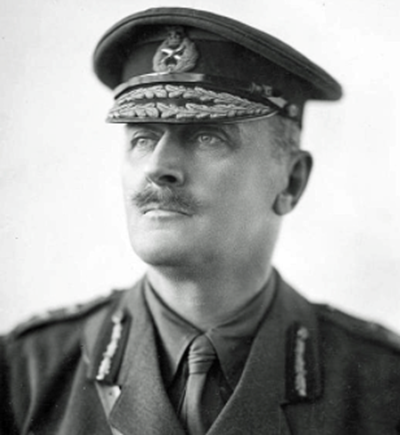
Allenby was a classic case of mixed military fortunes in the Great War. At least to some extent, this was due to an irrational bad temper and an inability to get on with his superiors – particularly Haig (idem.).
As General Officer Commanding of the BEF Cavalry Division, Allenby took it to France in August 1914, and did well in the retreat from Mons. He was rapidly promoted to GOC Cavalry Corps and his corps put up a dogged performance in the First Battle of Ypres in September/October 1914.
In May 1915, Allenby was given the command of V Corps during the Second Battle of Ypres, and, then, in October 1915, that of Third Army. Despite his early promising start on the Western Front at Mons, Le Cateau, Ypres and Frezenberg Ridge, Allenby hit a bad patch in 1916-17. He did not do as well as expected in the diversionary action at Gommecourt on the Somme in July 1916, incurring high casualty figures that were brought about, it was said, by his penchant for the immediate counterattack (à la francaise), irrespective of longer term operational considerations and casualties. And, in particular, he ‘became unstuck’ during the Battle of Arras in April 1917. Despite an initial advance of four miles, and employing original tactics such as the use of cellars and sewers as staging posts, Allenby eventually lost the plot and the attack degenerated into a costly slogging match within the deep defence system of the Germans. These accumulative failings eventually caused conflict with his subordinate commanders, and brought about his downfall.
However, with Lloyd George’s support, he was unexpectedly transferred, against his wishes, to another theatre of war as GOC, Egyptian Expeditionary Force (EEF); in fact, a promotion. Here his formerly unwelcome abrasive manner and natural hyperactivity did much to reorganise and re-energise what had become a rather moribund British-led army in Egypt and Palestine. This ‘new broom’ included the relocation of the EEF HQ to the front line in the desert at Khan Yunis, Gaza, Palestine, well away from the flesh pots and diversions of Cairo!
Allenby’s first campaign, in October 1917, was the Third Battle of Gaza, based on the axis Gaza – Beersheba, with the final objective being Jerusalem. Beersheba fell on 31 October 1917 to mounted Australian troops, and Jerusalem was formally entered by Allenby on 11 December 1917. A most welcome Christmas present to a beleaguered Lloyd George and a grateful British Nation.
Although he lost many of his best troops to the Western Front to meet the German 1918 Spring Offensive, within two years of taking command of the EEF, Allenby had: completely revitalised the EEF; established a modus operandi with the Hashemite Arab nationalists; achieved a spectacular victory over the Ottomans in Palestine and Syria, and brought about the capitulation of the Ottoman Empire in October 1918. Thus he had amply justified his mentor’s trust. His success at Megiddo (Armageddon), Palestine, with mounted British and Commonwealth troops in September 1918, albeit against a much weakened Ottoman Army, is considered to be his greatest triumph.
Appropriate levels of promotion – Field Marshal – honours, fame, and fortune followed, including an award by Parliament of £50,000, now equivalent to more than £500,000.
General comment: Allenby was a generally capable officer, faults and all, in search of a suitable role to play in the Great War. However, like other Western Front generals, Allenby did not find his true métier in the slogging matches of the Western Front. But rather with an independent command far away from the centres of power and intrigue, located in the new more free-ranging, free-booting, battle-zone of the Levant. Here his strength of character came to the fore, and his personal weaknesses became less disruptive. Against his own intuition, the post of GOC, EEF proved to be a perfect foil for his talents. With it he found both fame and fortune beyond his expectations, and in the process also served his country well.
It cannot be said that Allenby’s EEF troops liked him personally, as did Byng’s, (idem.) Plumer’s’s (idem.) and Birdwood (idem.), but they certainly came to respect his energy and military success.
BIRDWOOD, (Bill / Bird / Birdy) William Riddell (1865–1951)
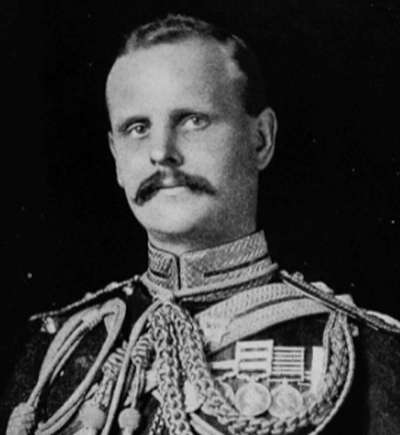
Birdwood was sent to Egypt in December 1914, as GOC of the Australian and New Zealand Army Corps that quickly became known by the acronym ANZAC. He was still under 50 years of age and this showed in his youthful and (comparatively) casual appearance. Immediately, he started intensive training around Cairo with the Western Front in mind. His exceptional understanding of the different culture and ways of his antipodean soldiers, quickly enabled him to establish a good working rapport with them that lasted through many trials and vicissitudes until May 1918 when, upon promotion to GOC, Fifth Army, he handed over command to an Australian, John Monash.
Sent to Gallipoli on a fact-finding mission by Kitchener in March 1915, Birdwood recommended that there be joint naval and military operations; but he later rescinded this after the naval attack of the 19 March 1915 on Gallipoli nullified any hope of surprise. In April1915, Birdwood took the ANZAC to Gallipoli, landing on a beach near a promontory called Gaba Tebe on the west coast; later to become famous as Anzac Cove. Although Birdwood was initially persuaded that there should be an immediate withdrawal that night, due to the unfavourable conditions at the landing site, the commander of the Mediterranean Expeditionary Force (MEF), Ian Standish Monteith Hamilton, refused him permission.
Birdwood became intimately associated with the ANZAC struggles at Anzac Cove, and the surrounding hills and gullies. Despite his failure to breakout of the enclave, and the disastrous assaults in the hills above Anzac Cove (May 1915) and Sari Bair Ridge (August 1915), he is often judged as the most successful British general on the peninsular. And was called by Hamilton himself ‘The soul of ANZAC.’ In May 1915, Birdwood was very lucky to survive a sniper’s bullet which struck a trench periscope that typically he was using in the front line trenches.
Birdwood became GOC, MEF on 19 November 1915, and played the leading part in the eventual successful evacuation of the Allies from Gallipoli in December 1915, and January 1916.
Birdwood took I ANZAC onto the Western Front in March 1916. Actions followed on the Somme with 19 attacks in 45 days, including the capture of the vital objective of Pozières. In September 1916, he became administrative controller of the whole of the Australian Imperial Force (AIF). Further military operations on the Somme took place in October and November 1916.
A far less successful joint Australian/British operation, led by Gough (idem.) at Bullecourt in April and May 1917, was part of the Second Battle of Arras, when both artillery and tank support was found wanting. Heavy Australian losses brought some criticism on to Birdwood himself, but much more on the senior British commanders Haig and Gough. So much so that, thereafter, the Australians refused to serve under Gough, and, for some time, shunned any collaboration with the new British tanks. Soon after, Birdwood’s I ANZAC was transferred to Plumer’s (idem.) British Second Army.
In November 1917, the five Australian divisions on the Western Front were combined into the Australian Corps. Then, in May 1918, Birdwood was promoted to the command of British Fifth Army, and thus finally relinquished command of the Australian Corps.
From 15 October 1918, Birdwood commanded British Fifth Army during the Anglo-Belgian Courtrai Offensive as part of the successful Final 100 Days campaign; although only in a relatively minor role.
General comment: Birdwood certainly relished his reputation as a firm favourite with the ANZAC troops, and maintained a lifelong relationship with them, well deserving the aforementioned soubriquet given to him by Hamilton - ‘The soul of ANZAC’. However, he was a good self-publicist, and some observers maintained he over-egged his liking for the ANZAC soldiers a bit, and their enthusiastic reprocicity to him. Whatever the true case, he certainly was able to motivate the ANZAC to long and sterling service to the British crown on both the Gallipoli and Western Fronts.
BYNG, (Bungo) Julian Hedworth George, (I862-1935)
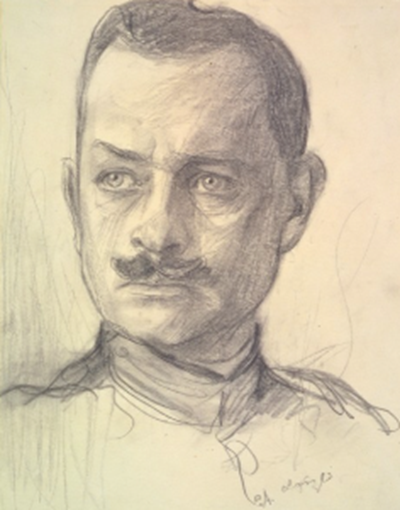
Almost an exact contemporary of Allenby, Byng too went to the Western Front with BEF in 1914 as commander of a Cavalry Division (3rd), giving sterling service to I Corps at the First Battle of Ypres. In March 1916, he was promoted to GOC, Cavalry Corps. However, unlike Allenby, he was adept at personal relationships, and this facility was to prove a boon in his later dealings with the occasionally ‘difficult’ Dominion troops.
In August 1915, after the failure of General Frederick William Stopford to follow-up on the successful landings at Suvla Bay, Byng was transferred to the Dardanelles to command IX Corps. But was too late to do much except serve as the architect of the highly successful plan of evacuation for the 105,000 Allied troops and considerable amounts of the materiel of the MEF, if by no means all of it. The withdrawal was successfully completed in January 1916, without the loss of a single man.
En route back to Europe from the Dardanelles, Byng was seconded to Egypt where he briefly assisted in the organisation of the Suez Canal Zone defences.
Returning to the Western Front in February 1915, he took command of XVII Corps but in May 1915 was given command of Canadian Corps, a uniquely self-contained unit formed of only Canadian troops, with which he served until early 1918.
During the First Battle of the Somme, the rapport and trust which he had created with his troops was reflected by the success of XVII Corps at Flers-Courcelette and Thiepval Ridge, in September 1916.
However, his most successful campaign was the extraordinary five-day assault on the fiercely contested 12km long Vimy Ridge, on the Douai Plain, in April 1917, with four Canadian divisions and British support. Tactically, this much fought-over redoubt was probably the most important site on the Western Front, and it certainly proved to be so in the perilous days of the German advance in the Spring Offensive in March/April 1918.
In June 1917, Byng was promoted to GOC, Third Army, in which capacity he planned the Battle of Cambrai in November 1917; it included new tactics employing large numbers of tanks, highly coordinated ‘predicted’ artillery (ie able to fire without prior registration on selected targets) and many support/attack aeroplanes. Although the final outcome of the Battle of Cambrai proved to be a disappointment (not least because of the usual error of continuing the offensive for far too long with insufficient reserves), the tactics used set the mould for the successful more open battles of the Summer and Autumn of 1918.
Byng’s troops also performed exceptionally well in resisting the onslaught of the German 1918 Spring Offensive, ceding only limited territory. His Third Army troops also amassed an unbroken record of military success (18 battles) during the Final 100 Days in 1918; Albert, Epéhy, Havrincourt and Valenciennes being outstanding victories, but all were eclipsed by the breakthrough of the much vaunted Hindenburg Defence Line on 27 August 1918.
General comment: Byng would be the first to admit that he was fortunate to have the command of the highly effective Canadian Corps from February 1915 to June 1917. However, it was his exceptional managerial skill that enabled him to forge these often considered ‘difficult’ troops into such an effective and cohesive force. His planning was usually excellent, and thoroughly thought out. Popular with all his troops, he is considered to be one of the most successful British senior generals on the Western Front.
FRENCH, (Johnny) John Denton Pinkstone (1852-1925)
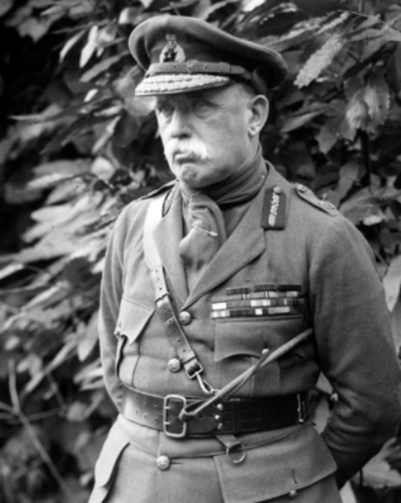
When French was selected to command the BEF (initially four infantry and one cavalry divisions) on the Western Front in August 1914, the consensus was that he was an excellent choice with a distinguished colonial service record – cavalry – and that he always had good rapport with the troops he had commanded. However, once thrust into the maelstrom of war that was the Western Front, encumbered by a mandatory subordinate status to the French commander, Marshal Joseph Jacques Césaire Joffre, and a small and relatively poorly equipped BEF, French found it difficult to maintain a balance between the fast changing operational demands made on him. This was manifested by wild swings between optimism and despair.
On several occasions in 1914 and 1915, the Secretary of State for War – Kitchener (idem.) – was obliged to personally intervene with direct orders and measures to ensure that French maintained a firm grip on events, and achieved the agreed level of collaboration and co-ordination with the French senior commanders. Unfortunately, French’s temperament proved to be too mercurial for the balancing act he had to perform. An example being his treatment of Smith-Dorrien (idem.), whereby an initial feeling of personal dislike was inexplicably exacerbated by Smith-Dorrien’s courageous decision to make a stand at Le Cateau on 26 August 1914. Although the decision to stand and fight had originally met with French’s approval, it was subsequently roundly condemned by French as ‘not being in the interest of the BEF as a whole’. Allied with Smith-Dorrien’s problems with the surprise German toxic gas attack at Ypres in April 1915, these ‘failings’ were claimed by French to be sufficient to warrant his decision to summarily withdraw Smith-Dorrien’s command on 30 April 1915. Smith-Dorrien resigned in early May 1915. It is indicative of French’s personality that he refused to see Smith-Dorrien personally, and sent Robertson (idem.) to do the evil deed on his behalf. It is also notable that at the time that no really authoritative figure ventured to take Smith-Dorrien’s side.
On the Western Front, French complied with Joffre’s initiative at the Marne in September 1914, then took the BEF to Flanders in October 1914 and participated in the First Battle of Ypres, successfully holding the line against numerous heavy German attacks with his limited number of troops.
In early 1915, French carried out the necessary attacks of attrition desired by the French command at Neuve Chapelle, Aubers Ridge and Festubert (May), Givenchy (June) and, again, at Loos (September). But although the assault at Neuve Chapelle made some progress, the others failed and incurred severe casualties. Disagreements with First Army commander, Haig (idem.) and unwise revelations to an influential London Times newspaper correspondent, led to behind-the-scenes machinations at the highest levels. These resulted in French’s submission of his resignation and return to the UK as Commander-in-Chief, Home Services. He did not return to the Western Front.
General comment: Whilst lauded as a pre-war colonial hero, French was unable to make a ready transition to the state of total war that existed on the Western Front in both the open warfare and static trench warfare stages. Perhaps his age - 62 in 1914 - had something to do with it. There is no doubt he had a difficult row to hoe, and difficult allies to deal with. All the while being strictly limited to what he could do on his own initiative, and with very little in the way of manpower and the material to do it with; he particularly suffered from the then current acute shell shortages. However, there is little doubt that his self-serving memoirs – and his treatment of Smith-Dorrien – have done much to sully his reputation in the long-term.
GOUGH, (Butcher / Goughie / Scapegoat / Thruster) Hubert de la Poer (1870-1963)

Gough was an old-school cavalry officer imbued with an enthusiasm for cavalry attacks that was unjustified by contemporary experience on the Western Front, allied with a tendency for over-confidence at the expense of his troops; hence the ‘Thruster’ nick-name. He was by seven years the youngest (45) of the senior Western Front generals. Three of his immediate family were winners of the Victoria Cross, and Gough himself ordered the firing of the first in action artillery shots of the BEF.
He joined the BEF in 1914, as a brigade commander, and was promoted to divisional commander (2nd Cavalry) in the First Battle of Ypres. He took over 7th Division in March 1915, after a good showing in the Battle of Neuve Chapelle. With the strong support of Haig (idem.), he was promoted to command of 1st Corps in July 1915, which participated strongly in the Battle of Loos, and clearly demonstrated his fighting spirit despite the failure of the Loos campaign. In May 1916, he was given command of the Reserve Army (later Fifth Army) but was denied any really active participation in the First Battle of the Somme as there was no significant breakthrough which his Reserve Army could exploit.
Gough’s subsequent failure at Bullecourt in April/May 1917, became a scandal when, because of their extraordinary losses of men and the confusion they suffered on the battlefield, the Australian Corps refused to serve under Gough again, or even be associated with the new British weapon, the tank.
Chosen by Haig to take the van at the Third Battle of Ypres in 1917, Gough’s Fifth Army suffered an unfortunate state of disorganisation and heavy loss of life as the offensive ground on. Although the initial stages went well Gough came unstuck on the Gheluvelt Plateau, failing to maintain the critical momentum of the advance. The totally unforeseen unseasonally inclement weather vastly added to Gough’s problems, and he repeatedly asked Haig to discontinue the offensive. Haig refused, and the offensive ground on through impossible conditions of flooding and mud. Any hopes of an early significant breakthrough had been firmly dashed by mid-August 1917.
In late August 1917, Plumer (idem.) and Second Army, to whom Haig should have given the job in the first place, was called in to salvage the situation and take the van, pushing Gough’s Fifth Army into a minor role.
Worse, Gough was principally blamed for the collapse of Fifth Army that so nearly jeopardised the defence against the German 1918 Spring Offensive. The BEF was eventually pushed back over 40 miles, and Gough subsequently became the principal scapegoat for the disaster. Birdwood (idem.) replaced him on 28th March 1918, and Gough was not given any further employment during the war. In fact, he didn’t receive any formal recognition of his Great War contribution until 1936.
General comment: Gough was cursed with an over-enthusiasm for the offensive, unfortunately matched with a rather careless regard for staff work, and a personal arrogance. This pushed him (and his unfortunate men) on when prudence was indicated as the wiser option; although to be fair it was he who pleaded with Haig, unsuccessfully, for the ruinous Third Battle of Ypres/Passchendaele to be called off in mid-August 1917. Although much admired by Haig, and others, he could not deliver when the chips were down.
HAIG, (Butcher of the Somme / D H) Douglas (1861-1928)
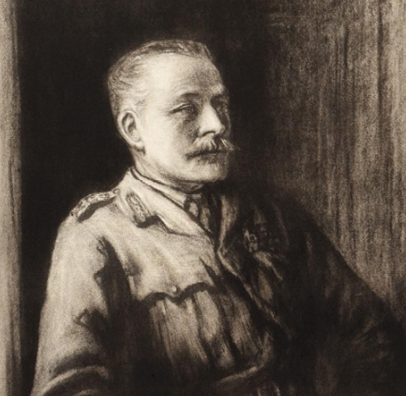
Haig was a man of few words and, apart from some occasional outstanding lucidity, was rather inarticulate. From these impediments arose many of his future difficulties, and misunderstandings. However, he had excellent connections with the British Royal Family that ensured his preference in promotion and influence.
Haig arrived on the Western Front with the BEF in August 1914 as commander of I Corps. He led his troops well at Mons and at the Marne, but with the rest of the BEF was brought to a halt on the Aisne. He also participated with distinction in the First Battle of Ypres in October/November 1914, where the BEF managed to hold the Germans and protect the Channel Ports. As a reward for his sterling services at Ypres, French (idem.) promoted him to GOC, First Army in December 1914.
As GOC, First Army, he supported the various French military initiatives on the Western Front. In March 1915, he captured Neuve Chapelle, and in May attacked Aubers Ridge and Festhubert but with less success. A costly attack at Loos in September/October 1915 was imposed on the BEF and caused such friction between Haig and French that ultimately led to the dismissal of French (idem.) in December 1915. Haig, who was clearly the winner of the dispute, due his influence at court and with the Prime Minster, and the general discontent with the performance of French, became Commander-in-Chief of the BEF on 19th December 1915.
As C-in-C, BEF, Haig’s mantra became ‘The Breakthrough’ whereby dense concentrations of infantry, supported by artillery, would breakthrough the continuous defences of the enemy by frontal attacks: there were no flanks to be turned in an uninterrupted front line. This mass assault by waves of infantry, and intense artillery fire, was to allow the cavalry to follow through, and inflict chaos in the enemy rear and communications lines, thus causing a collapse along the whole enemy front. Ultimately, this would enable the BEF to drive the enemy from French and Belgian soil. Unfortunately this approach – often forced on Haig, against his better judgement, by the insistent French requirements for operational support – caused huge losses of men by attrition in offensives extended long beyond their point of positive return. This ultimately led to Haig acquiring the reputation of being a ‘Butcher’.
The losses at the First Battle of the Somme (1916), and the Second battle of Ypres (1917) – that included Passchendaele – did much to insinuate the charge of attrition in the British national psyche, whilst the much heavier casualties of the successful campaign of the Summer and Autumn of 1918 were accepted with more equanimity.
The huge management task faced by Haig on the Western Front is often underestimated: in the First Battle of the Somme in 1916, he had 1.5 million men under his command with which he was expressly charged to facilitate the expulsion of the German Army from the occupied areas of France and Belgium. There was no Plan of War by which this feat was to be achieved. He was just expected to coordinate with his Allies and bring it about with the shortest possible delay. Unfortunately, he chose plans which were too ambitious for the even the extraordinary human and materiel resources available to him eg The First Battle of the Somme, Messines Ridge, the Third Battle of Ypres (Passchendaele) and Cambrai 1917. Real success only came in 1918, with Haig’s management of the extraordinary series of victories over a German Army, weakened by the 1918 Spring Offensive, in what came to be called the Final 100 Days Offensive on the Western Front. These victories were made possible by a war experienced, strengthened and re-equipped British Army, now well trained in the art of total war. It was led by a well coordinated multi-task team that made even the breakthrough of the much vaunted German Hindenburg defence line appear to be a relatively simple task.
After the Armistice on 11 November 1918, Haig was much lauded and generously awarded with high honours, a grant of £100,000 (worth well over £1,000,000 today) and a grand estate. But, after Haig’s death aged 67 in 1928, an adverse delayed reaction developed as the horrendous slaughter that had occurred on the Western Front on his watch became better known and understood. This reaction was to blight his memory in many eyes until quite recently, when several attempts have been made by eminent Great War historians to better justify his actions.
General comment: Haig was a product of the British Empire school of colonial warfare and an upper-class dominated officer corps. When static trench warfare developed on a massive scale on the Western Front, he had no references on how to deal with it.
Nevertheless, he was both intelligent and showed an interest in new technology. It says much for Haig’s conduct of the war that Lloyd George had to admit that he could not find a better candidate to replace Haig in 1917-18, despite his most determined efforts.
HORNE, Henry Sinclair (1861-1929)

Horne was perhaps the most enigmatic of the British Western Front generals. He is known as the ‘Silent General’ due to his professed low profile during his service, and the lack of any post-war memoirs, writings or pronouncements. However, the recent release of his personal papers by his family have cleared away many of the lacunae that existed in his personal record. Despite his low personal profile, Horne was greatly assisted in his career by his mentor Haig (idem.), who was particularly active in promoting him during his time on the Western Front, giving him clear preference on several occasions over his seniors in the service.
Horne travelled to France with the BEF in August 1914, in the capacity of Haig’s (I Corps) gunner. Over the period 5th September to 22nd November 1914 he fought in the rear-guard of the fighting retreat from Mons, and at the Battles of the Marne, Aisne and First Ypres,
In January 1915, Horne was promoted to command 2nd Division in January 1915, and fought with it in the Sectors of Givinchy (March), Festubert (May) and Loos (September/October) successfully proposing at ‘battle post-mortem’ discussions that the artillery on the Western Front should be completely reorganised.
To his great surprise, in November 1915, Horne was selected by Kitchener (idem.) to travel with him to the Dardanelles to conduct a review as to whether a withdrawal from all, or part of, the Allied beachheads was indicated. The outcome was the total withdrawal from the Allies from the Gallipoli Peninsular that took place without the loss of a single man in December 1915 and January 1916.
Following on from the Dardanelles trip, Horne was sent by Kitchener to the Suez Canal Zone to strengthen the British Army presence there. This task completed, he was appointed to command the new XV Corps that was established in the Zone.
Horne returned to the Western Front in March 1916. Clearly assisted by Haig’s promotion to GOC, BEF, Horne was again swiftly promoted to GOC XV Corps when it too was transferred to the Western Front and became part of Rawlinson’s Fourth Army in the Battle of the Somme; notably at Fricourt (July), High Wood (July – September) and Flers (September) .
At High Wood on the Somme, Horne made some costly errors incurring heavy casualties. Even so, in September 1916, he was promoted to command First Army, a post he held until the end of the war. It was his Canadian Corps that captured Vimy Ridge in April 1917, with appropriate kudos and awards being acquired by him.
Further successes were achieved, again with help of the Canadians, in the Second Battle of Arras.
First Army played an important role in the resistance to the German Spring Offensive in 1918. Horne claimed to be the only commanding general who did not withdraw his Headquarters during the entire offensive.
In the Final 100 Days Offensive in 1918, Horne’s First Army also played an important role in a series of successful battles, being in almost non-stop action right to the final day of the war. Again his Canadian Corps played a key role in his successes.
For his entire period on the Western Front, Horne was central in the development and deployment of new methods of artillery tactics, as well as being credited with a crucial early input into the tactics of the ‘Creeping Barrage.’ He was also an early proponent of the liaison between the artillery and the nascent Royal Army Flying Corps, and the development of artillery location and ranging techniques.
General comment: Horne was indeed an unusual Western Front general in that he did genuinely avoid the lime-light. Although his claim that his occasional insistent clamour for distinctions – awards, mentions-in-despatches and the like - was only for “his wife’s sake” does appear a bit precious.
Generally speaking, he was an efficient administrator and tactician, greatly aided by the military verve and dash of the Canadian Corps, and the preferential advancement provided by his mentor. He was good officer and reliable commander and, when the occasion demanded, he was no shrinking violet: during the First Battle of the Somme he dismissed two of his divisional commanders – T.D. Pilcher (17th Northern) and I. Phillips (38th Welsh) - on the same day, 11 July 1916.
Also, it would seem that he did not order that all his personal papers be destroyed at his death or, if he did so, his family disobeyed him, as they were handed over largely intact to the Imperial War Museum by his daughters in 1997.
KITCHENER, (K K) Horatio (1850-1916)
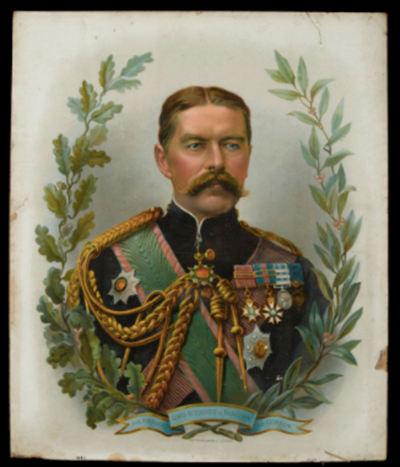
Lord Kitchener of Khartoum, was by popular demand drafted into the War Office as Secretary of State for War (a.k.a. Minister for War) when the crisis about a possible European War broke in the summer of 1914. He was a national hero with enormous influence upon both the government and the general public, but he had limited knowledge of how the War Office worked, and even less about politics. Once war was declared by Britain on 4 August 1914, almost alone he predicted that the war would be long and difficult, and immediately took the extraordinary measures necessary to increase the army to one of continental size.
With his doubts about the efficacy of the Territorial Force as the basis of an effective new army, his ambitious, personalised and highly successful recruitment programme provided the army with volunteers – Kitchener Armies - to supplement, and replace, the Pre-War British Regular Army on the Western Front; just in time to strengthen the weakening French in 1916. However, by orientation he was an ‘Easterner’, and did not believe that all of the priority should be given to the Western Front.
Always keen to maintain cordial relations with Allies, Kitchener made trips several to the Western Front to cement relationships. In particular, in September 1914, when he urged French (idem.), commander of the BEF, to stand firm, and assured the French that the BEF would do so despite their current difficulties. Kitchener also created, from a very small base, a massive munitions industry in the UK, and contracted many over-seas producers to augment supplies.
Kitchener was not one for delegation, or a good communicator, and by early 1916 there were grumbles that he was becoming part of the problem.
He drowned at sea on 5 June 1916, in the sinking by a German mine of the warship HMS Hampshire, en route to Russia, whilst on a secret diplomatic mission. But by then one of his admitted major deficiencies – the acute shortage of suitable shells on the Western Front – had largely been resolved.
General comment: Kitchener was certainly the man of the hour in August 1914. His reputation and iron-will enabled the Government to meet what it saw as its responsibilities to its Allies in Europe. He set in train the mobilisation and expansion of a British and Commonwealth Army, which eventually saw the conclusive defeat of all its enemies. He also created the munitions industry that to was provide the huge amount of resources required to fight a total war.
To many he was the architect of Britain’s winning of the Great War.
PLUMER, (Daddy / Drip / Plum / Plume) Herbert Charles Onslow (1857-1932)
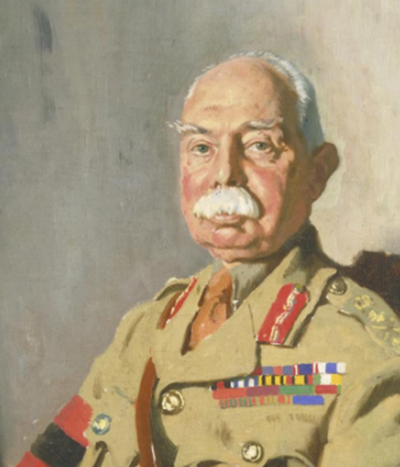
Of the 25 or so really senior generals who served on the Western Front, Plumer was perhaps the most colourful and easily recognised. His plump, jodhpurred figure, ruddy complexion, bald head and heavy white moustache became identified as typifying the British Western Front general. (It is often claimed, incorrectly, that the London Evening Standard newspaper cartoonist David Low used him as the prototype for his famous cartoon character Colonel Blimp, who closely resembled a caricatured Plumer).
Plumer arrived on the Western Front in January 1915 to command V Corps located in the Ypres Sector. In April 1915, all the troops the Ypres Sector were assigned to what was called Plumer’s Force. Almost immediately, in May 1915, Smith-Dorrien (idem.) was relieved of his command of Second Army, and Plumer was promoted to this post. A post Plumer held in the Ypres Sector until he was sent post-haste to Italy in late 1917 to command British forces there, after the rout of the Italian Army at Caporetto on the Italian Front.
After the Second Battle of Ypres came to a close on the 25 May 1915, for the next two years the Ypres Sector became a daily ‘slugging it out match’ between the British and the German Army, with the Germans holding most of the dominant positions.
Generally recognised as one of the most effective of the British senior commanders on the Western Front, Plumer maintained the respect and affection of the troops under his command – hence the soubriquet ‘Daddy’ - by his meticulous planning, technical ability and constant concern for casualty levels. His success is often attributed to his ability to choose good subordinates.
Plumer’s qualities were clearly demonstrated by his successes in June 1917 at Messines, in preparation for the Third Battle of Ypres, and the recovery he salvaged from Gough’s (idem.) disastrous campaign there, also in 1917. In this Sector, Plumer made his reputation at: Menin Road Ridge (20 September); Polygon Wood (26 September); and Broodseinde (4 October). He used both his infantry and artillery well to rain telling blows on the Germans, albeit latterly at a high cost in British and Commonwealth casualties.
Recalled to the Western Front from the Italian Front in March 1918, he participated in his usual reliable way in the resistance to the German Lys Offensive in Flanders in April and in support of the Courtrai Offensive of King Albert of Belgium, in the Autumn of 1918.
General comment: Plumer clearly demonstrated the essential military characteristics. He had the ability to rapidly adapt to changes in tactics and technology that are required of a general officer in globalised industrial warfare, whilst retaining the humanity to be concerned for the welfare of the troops under his charge.
RAWLINSON, (Rawly / The Cad / The Fox) Henry Seymour (1864-1925)
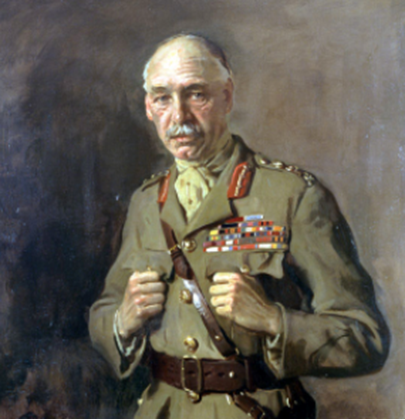
At the outbreak of the Great War in August 1914, Rawlinson was an infantry officer on half-pay, but was quickly put into a staff job as Director of Recruiting at the War Officer under Kitchener (idem.). In September 1914, he was sent to the Western Front as commander of 4th Division. By early October he was back in UK to mobilise 7th Division and 3rd Cavalry Division for a mission to support the Royal Naval Division (RND) in the defence of the port of Antwerp against the German siege. On 6 October 1914, Rawlinson arrived in Ostend, Belgium, with 22,000 troops. The very same day, the Belgian government evacuated to Ostend. The fortress and the city of Antwerp fell to the Germans on the 9th October 1914.
Rawlinson moved on to Ypres with his renamed IV Corps. He did well in the fighting of the First Battle of Ypres, and the other key battles of 1915 e.g. Neuve Chapelle, Aubers Ridge, and Festubert and Loos. But a chronic shortage of shells and a generally deficiency in artillery compromised the infantry assaults. But his efforts were not, it seems, to the satisfaction of French, the BEF commander (idem.), who was particularly displeased over an operational delay at Neuve Chapelle in March 1915, and who had taken a personal dislike to Rawlinson, amongst others.
However, when the proposal of a joint Anglo-French offensive on the Somme was raised in late 1915, Haig (idem.), now Commander-in-Chief of the BEF, chose Rawlinson to replace himself at First Army and then, in January 1916, as commander of Fourth Army who were to be entrusted with the job of the so-called ‘Big Push’ on the Somme in mid-1916.
Haig’s idea was for an infantry assault on a wide front to enable a break-through by the cavalry, and a rolling up of the enemy line. Rawlinson preferred a more limited, measured, approach to better suit his ‘inexperienced’ New Army troops. This involved an intense and prolonged period of artillery bombardment of the German first line, to destroy the enemy defences and defenders, followed by a ‘bite and hold’ assault by the infantry. This would be followed by consolidation, more artillery preparation of the second German line and another ‘bite and hold’, and so on. In the event, despite Rawlinson’s insistence, Haig imposed an extension of the operation to cover all the German defensive positions to permit the more ready deployment of his waiting horde of cavalry.
On the 1 July 1916, after a 7 day preparatory barrage – one British heavy artillery gun per 21 yards of front using 75% shrapnel, plus the explosion of several huge strategically located mines - Fourth Army, with the diversionary support of two divisions of Third Army on the left and the French XX Corps on the right, left their trenches and mostly advanced at walking pace towards the German lines. The outcome for the British was dire, particularly on the left and in the centre: the preparatory barrage was only patchily effective and many British soldiers fell to machine-gun and artillery fire as they crossed No Man’s Land and tried to penetrate the still uncut concentrations of barbed wire and undestroyed German defences. Post-bombardment, the surviving German gunners had been given the critical seconds and minutes to leave the safety of their well-made dug-outs and to bring their weapons to bear on the approaching British with terrible effect.
British casualties were 60,000 for the day with 20,000 killed. Nevertheless, the First Battle of the Somme was to rage on with a whole series of further assaults, including the introduction of the new secret weapon - the tank - until it shuddered to a halt with the early snows of November, having created a stellar list of battle honours such as Bazentin Ridge, Delville Wood, High Wood, Mametz Wood and Theipval. All at a cost of over 400,000 casualties and for relatively modest territorial gains ie 6 miles of advance and 100 square miles in area.
Although Rawlinson was praised at home and promoted to a full general, Lloyd George and Haig both openly depreciated Rawlinson’s efforts during the Somme offensive. Apart from the promise of a minor role in a joint 19l7 land/coastal operation, which came to naught, he was denied any important tasks until November when he was called upon at the very end of the Third Battle of Ypres (Passchendaele).
In February 1918, he was appointed as British representative to the Supreme War Council, at Versailles. But, on 21 March 1918, the thunderbolt of the German 1918 Spring Offensive struck the British Army. And on 28 March 1918 Rawlinson was called back to duty on the Western Front. He held his own with some success. By the middle of the year he began to sense the weakening of German resistance and resolve, and he foresaw the possibility of a British counter-offensive. This was exemplified at Amiens on 8 August 1918 - the ‘Blackest Day of the German Army’. From that point on Rawlinson’s Fourth Army, including the Australian and Canadian Corps and two USA divisions, was constantly forcing the Germans back to their ultimate defence line – the Hindenburg Line. Then in September 1918 his Canadian, Australian and British troops crashed through it opening up the way to the Armistice on 11 November 1918.
General comment: Rawlinson will always be remembered, with Haig, as a prime architect of the British military disaster that was 1 July 1916 on the Somme, when the British Army suffered its greatest ever casualty figures in a single day. Also, history will surely note that Rawlinson’s preoccupation on the Somme with the role of the infantryman, and Haig with that of the cavalryman, had somehow resulted in the eventual imperfect plan that had cost the BEF so dear that day.
Fortunately, by mid-1918, both he and Haig had matured enough to allow their Western Front subordinates to do their job, supervised but not unduly impeded. So, in all justice, it is to be hoped that Rawlinson’s extraordinary series of successes in the100 Final Days Campaign of 1918 will also be recalled.
ROBERTSON, (Wully) William Robert (1860-1933)
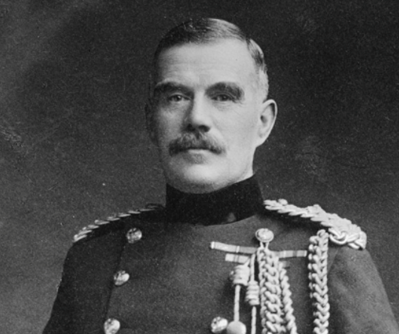
Robertson was a very exceptional soldier indeed; he is the only British ranker who has earned a Field Marshal’s baton.
After the outbreak of the war in 1914, he was firstly an assistant to French (idem.) during 1914-15, serving as Quarter-Master General of the BEF, where he undertook a ruthless reorganisation. Then, in January 1915, he became French’s Chief of the General Staff.
From December 1915, he was a highly effective Chief of the Imperial General Staff (CIGS) in Whitehall, and became a key figure in the British war effort as military adviser to the government and King George V. Robertson’s ‘war ideas’ included: conscription; killing Germans rather than expensively capturing territory; a strengthening of the general staff in the War Office; the build up of British and Commonwealth troop strength on the Western Front, and the creation of a joint Allied plan to coordinate and formulate future operational plans. But his unrelenting support for a Western Front oriented policy clashed with that of Lloyd George and his clique of ‘Easterners’. Also, he did not agree with Lloyd George’s creation of a Supreme War Council.
He was eventually dismissed in February 1918 and posted to a relatively minor Home Command. Later, in June 1918, he was moved to the more prestigious post of Commander-in-Chief Home Command. However, after the war, he again played a leading role as commander of the British Army on the Rhine.
General comment: Robertson was an excellent staff officer with clear ideas and the will and ability to see them through. His belief that the war could only be won if Germany was defeated in the West, allied his fierce loyalty to Haig (idem.), inevitably collided with Lloyd George’s belief in an Eastern solution and his (Lloyd George’s) growing apathy to Haig. Robertson was a political casualty of war if ever there was one.
SMITH-DORRIEN, (S D) Horace Lockward (1858-1930)

Smith-Dorrien was a classic example of a promising military career cut short by the personal and professional animosity of a superior officer; in this case Field Marshal John Denton Pinkstone French (idem.).
Smith-Dorrien joined the BEF on 20 August 1914 as commander of II Corps after the sudden death from a heart attack on 17 August 1914 of its commander General James Grierson. Faced with most of the force of the German onslaught at Mons, Smith-Dorrien more than coped until ordered to retreat by French. He then made, on his own initiative, a vital stand at Le Cateau on 28 August 1914 that was critical in saving the cohesion of the BEF. Initially, this stand was fulsomely praised by French, although he deliberately withdrew his own I Corps leaving Smith-Dorrien’s II Corps unsupported. Smith-Dorrien was threatened with dismissal by French for disobeying orders at Le Cateau, but was saved by the intervention by Haig (idem.).
As commander of II Corps, Smith-Dorrien took part in the 1914 actions at the Marne (5 to 10 September), the Aisne (12 September to 2 October) and the First Battle of Ypres (19 to17 November). On 26 December, 1914, II Corps was renamed Second Army.
Second Army also participated in the Second Battle of Ypres (22 April to 25 May 1915). Smith-Dorrien, wishing to make a strategic retirement from Ypres to cut casualties, fell foul again of French’s intentions for even more costly assaults. When he approached French in protest, he was immediately dismissed by means of a third party – Robertson (idem.) - with the famous words “Orace, you’re for ‘ome”.
Smith-Dorrien was offered a post in training, but this was scuttled by the Prime Minister, Asquith, who wanted to keep the position free for French, who he planned to sack from the command of the BEF! Smith-Dorrien was also offered the command in East Africa and accepted. But he fell ill en route and was unable to take up the post.
These shenanigans clearly illustrate the unbridled power that the well connected senior-most Great War generals could command over even senior army officers, leaving them with virtually no effective recourse to appeal when their careers were effectively ruined.
General comment: Smith-Dorrien’s most promising career on the Western Front was abruptly cut off by the animosity of the GOC, BEF, French; his memory (he died in a road accident in 1930) was tarnished by patent lies and deliberate falsehoods written in French’s memoir 1914. However, with the help of influential friends, a dignified Smith-Dorrien managed to get the official history of the First War (1922) to cite documents that supported his case.
WILSON, (The Intriguer) Henry Hughes (1864-1922)
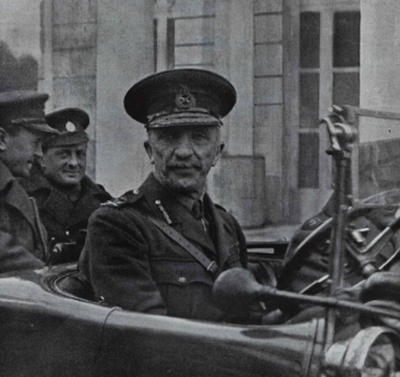
Few soubriquets quoted here so clearly describe the character of an individual as does the use of ‘The Intriguer’ with regard to Wilson, except, perhaps, ‘The Francophile’ which he certainly also was in spades.
Pre-war, Wilson brilliantly developed - and subsequently executed - the joint plans with the French Army for the deployment of the BEF in the event of war with Germany.
Wilson went with the BEF to France in August 1914 as the Deputy Chief of General Staff to French (idem.). While strongly political, and a fluent French speaker, he was a mediocre and indecisive military commander as exhibited by his poor performance at Mons, as commander of IV Corps in December 1915, and as temporary commander First Army at Vimy Ridge in May 1915.
In January 1916, he was deputed to liaison work with the French on a joint mission to Russia and, on his return, in May, at French Army HQ. He was good at his job, but was a notorious intriguer and, as such, was subsequently declared by Marshal Pétain as persona non grata at his HQ. Wilson resigned the post and returned to the UK where he was found employment by the Prime Minister, Lloyd George; initially, as an unofficial adviser to Lloyd George. Wilson advised the Prime Minister to press for improved Allied collaboration on policy making which, Wilson claimed, would curb the influence of both Haig and Robertson, both of whom were now on Lloyd George’s list of bêtes noires. From 1 December 1917, Wilson became British Military Representative on the Allied Supreme War Council.
Having aided in the dislodgement in February 1918 of Robertson (idem.) from his post as Chief of the Imperial General Staff (CIGS), Wilson assumed that role until the end of the war. It is generally acknowledged he did an excellent job in this capacity, working at the highest level with the Prime Minister, his colleagues and the Allies; particularly the generalissimo of the combined allied military command, Marshal Ferdinand Foch. Wilson had finally found his métier.
General comment: Wilson was a man of many talents, but flawed by his inability to focus strictly on his military duties, leaving well aside political and other matters that were outside his purview. He was intensely disliked by some of his contemporaries, but others claimed to find his antics entertaining. Finally, finding a berth that suited his special talents, (Chief of the Imperial General Staff, CIGS) he served his country well.





